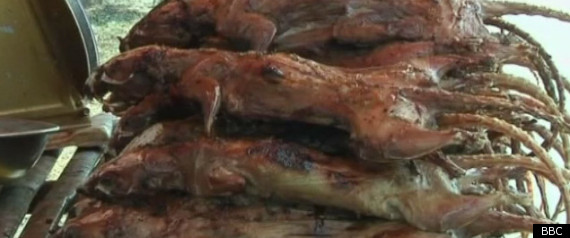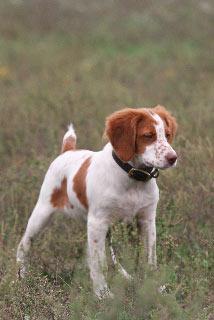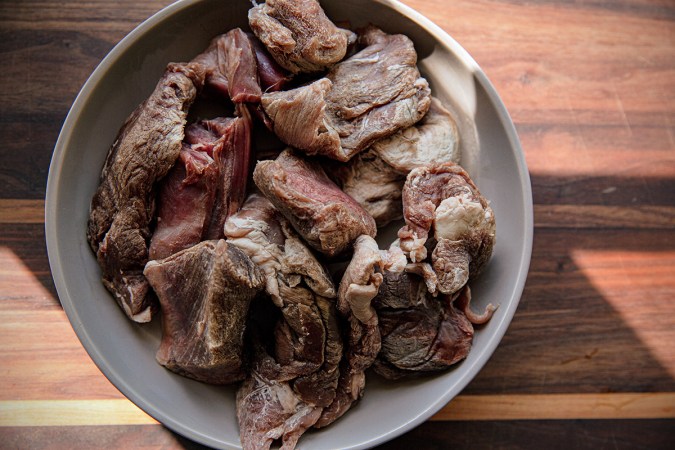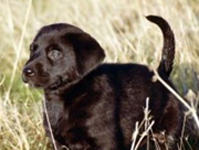Part 2: Theno-force way to get your pointing pups retrieving
Last issue wediscussed how Mark Fulmer, a breeder/trainer in South Carolina, uses positivereinforcement to teach puppies what pays off for them, so their developingbrains learn even faster. A simple clicker calls attention to a desiredbehavior the puppy has just performed (come, go or stay), and the behavior isimmediately reinforced with a slice of chicken-based hot dog. This month, thefocus is on retrieving.
Name Calling:Fulmer’s puppies are named early and are called by name during all dailyhandling. At 6 weeks, Fulmer gets a couple of steps away, calls the pup’s nameand adds “Here.”
Most pups thisage are eager to come to us anyway, but Fulmer reinforces it with a click andtreat. If the pup is reluctant, Fulmer quickly steps back to the pup and doesthe click and treat anyway. Next time, the pup connects the click with ahot-dog slice and usually comes right in. After that, Fulmer steadily increasesthe distance before saying, “Duke, here!”
Kennel Command:The kennel crate is a plastic pet carrier with openings to see through and thedoor removed. “Kennel” is a going-away command, so Fulmer drops a fewhot-dog slices inside the crate and walks the pup close enough to smell them.The pup investigates, goes in, eats the treats, comes out and then maybe goesback to see if it missed any.
At that moment,Fulmer clicks and treats. If the pup doesn’t return, it will remember the nextday, go back in and get a click and treat. After that, Fulmer delays the clicka second or two, then keeps stretching the length of time the dog must stayinside before the click signals a treat. A horse blanket on the crate floorfeels different from the concrete outside, and all paws must be on it or elsethere is no click and treat.
Stand to Game: Toteach standing steady to game, Fulmer uses clickers and place boards with 16-by 30-inch carpeted plywood surfaces on two-by-four frames. When a pup jumps upon one, he says, “Place,” and immediately clicks and treats. Graduallythe pup must stay in place for longer and longer before the click andtreat.
Eventually,Fulmer uses a pigeon to test a pup’s will to stay in place. At first, Fulmerjust brings the bird out from behind his back. A click and treat follow if thepup stays put. Next, one wing is moved slightly. Then one wing flaps. Finally,the pup stays in place with the pigeon flapping both wings. All this leads tosolid points and steady to wing and shot.
Heel on Leash:The pups are now 10 or 11 weeks old and their necks are strong enough to takeflipping around from leash restraint. At first, they typically brace themselvesagainst the pressure. If they relax and come to “Here,” it’s a quickclick and treat. The treat is always in Fulmer’s hand near his left knee, wherehe wants the pup. Whenever the pup is in position, it gets the click andtreat.
Fetch FrozenQuail: At 12 weeks, Fulmer tosses a frozen quail a couple of feet from theplace board and says, “Fetch!” Some pups jump off, grab the bird, hear”Place,” and jump back. They get the click and open their mouths forthe treat, dropping the quail into Fulmer’s waiting hand. Others aren’t surethey’re supposed to pick the quail up, but if they show interest they also getthe click and treat to help that interest grow. Most will fetch well by 16weeks.
Above: Fulmer’sassistant tosses a frozen quail with the “Fetch” command.”Place” is said the instant the pup grabs the bird. A treat follows”Place,” so the pup jumps back on the place board, hears the click,opens its mouth for the treat, and drops the quail into a waiting hand. Left: Opportunities can be lost whenyou fumble to find the button on a box clicker. The Triple Crown clicker can beclicked on both sides. ($3.99; triplecrowndogs.com)






